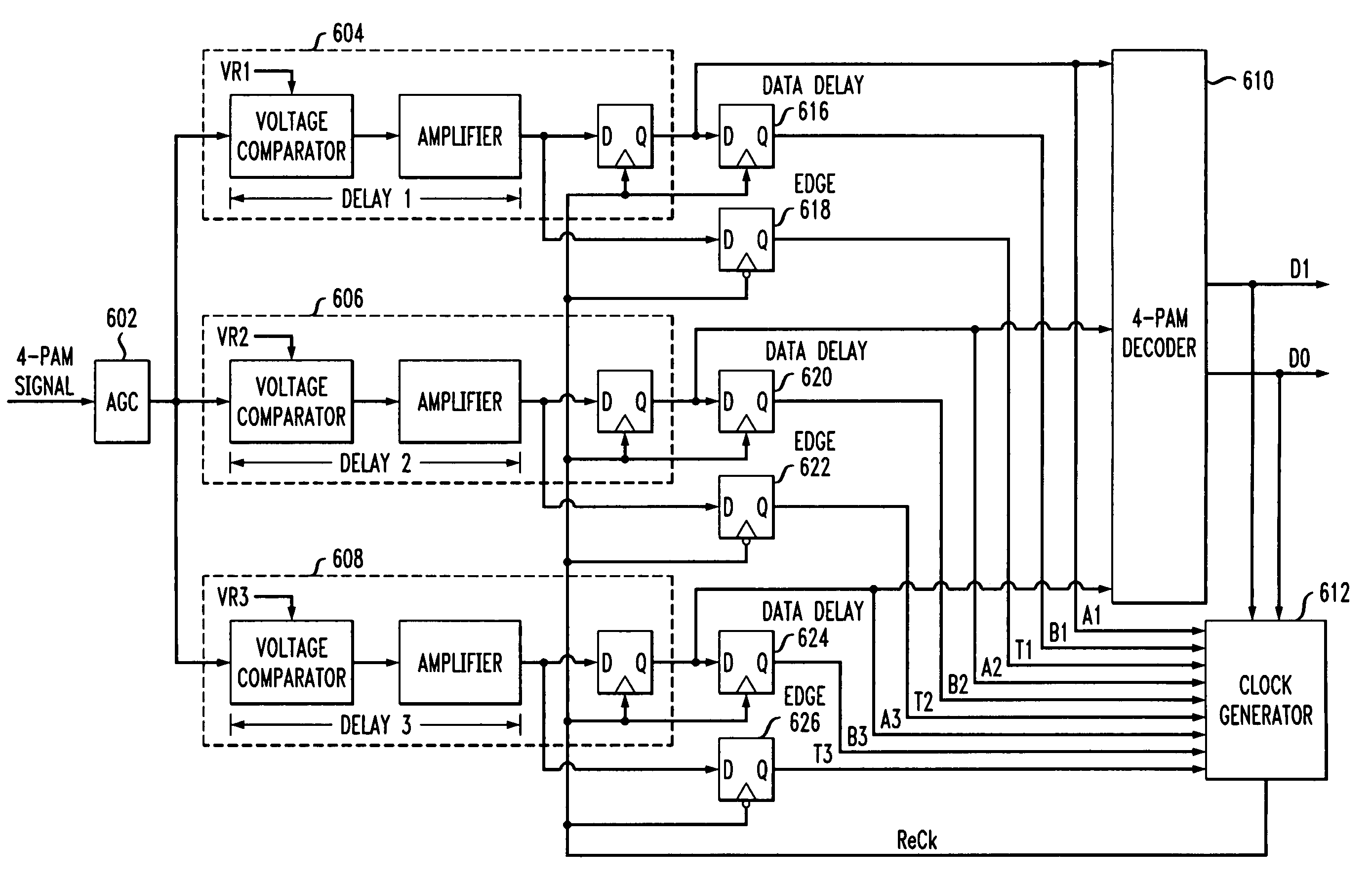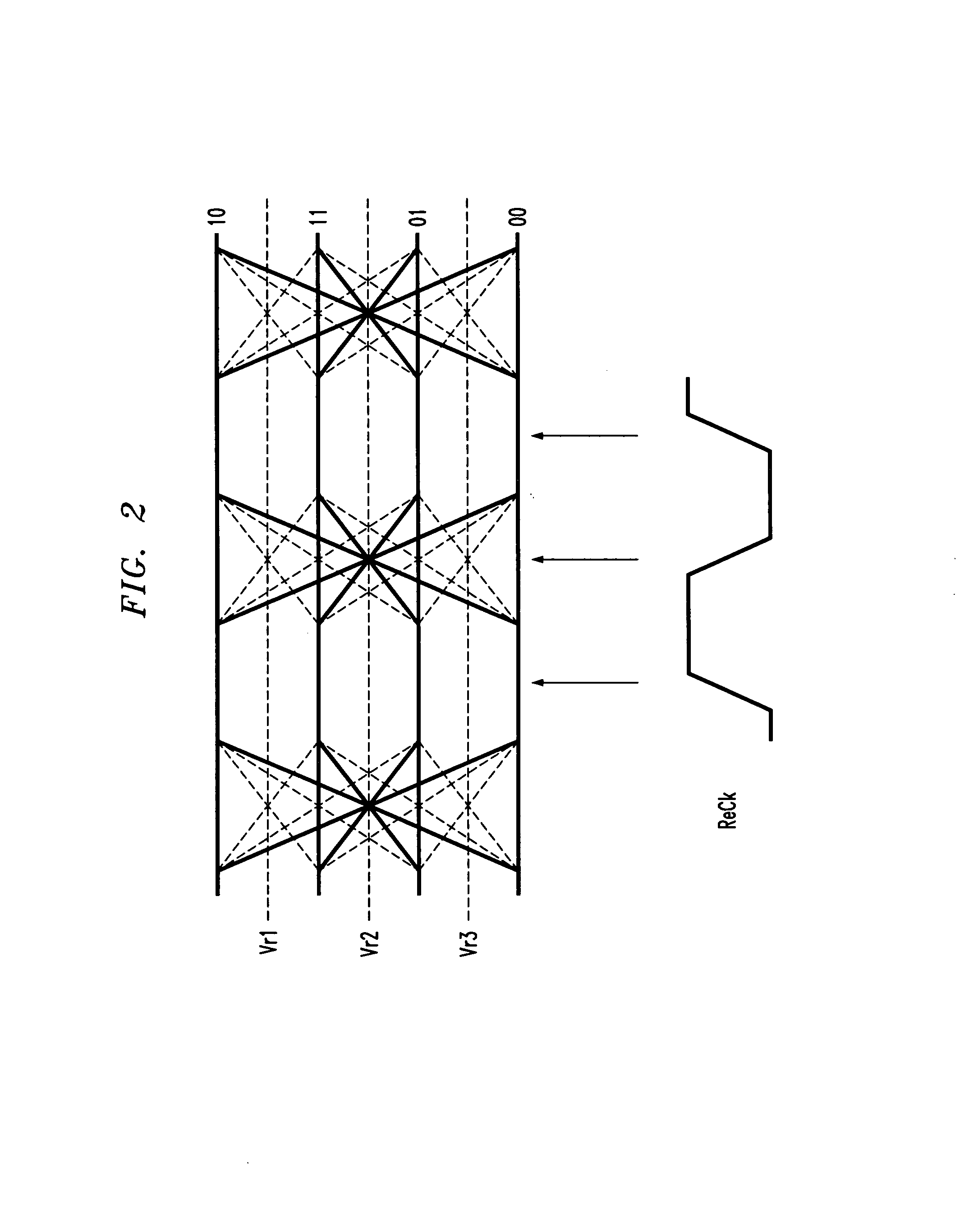Multi-level pulse amplitude modulation receiver
a receiver and pulse amplitude technology, applied in pulse techniques, dc level restoring means or bias distortion correction, baseband system details, etc., can solve the problems of limiting the performance of the receiver, and reducing the timing margin of the receiver
- Summary
- Abstract
- Description
- Claims
- Application Information
AI Technical Summary
Benefits of technology
Problems solved by technology
Method used
Image
Examples
Embodiment Construction
[0029]Reference herein to “one embodiment” or “an embodiment” means that a particular feature, structure, or characteristic described in connection with the embodiment can be included in at least one embodiment of the invention. The appearances of the phrase “in one embodiment” in various places in the specification are not necessarily all referring to the same embodiment, nor are separate or alternative embodiments mutually exclusive of other embodiments.
[0030]4-PAM Receiver
[0031]FIG. 1 is a block diagram of a 4-level pulse amplitude modulation (4-PAM) receiver of the prior art. It includes a data recovery circuit comprising automatic gain controller 102, slicers 104, 106, and 108, and 4-PAM decoder 110. It also includes a local clock recovery circuit that includes data delay and edge D-FFs 109, and clock generator 112.
[0032]Data Recovery Circuit
[0033]At the input to the receiver, a 4-PAM input signal is first gain adjusted by automatic gain controller 102 before being split three ...
PUM
 Login to View More
Login to View More Abstract
Description
Claims
Application Information
 Login to View More
Login to View More - R&D
- Intellectual Property
- Life Sciences
- Materials
- Tech Scout
- Unparalleled Data Quality
- Higher Quality Content
- 60% Fewer Hallucinations
Browse by: Latest US Patents, China's latest patents, Technical Efficacy Thesaurus, Application Domain, Technology Topic, Popular Technical Reports.
© 2025 PatSnap. All rights reserved.Legal|Privacy policy|Modern Slavery Act Transparency Statement|Sitemap|About US| Contact US: help@patsnap.com



